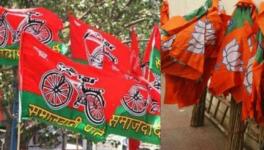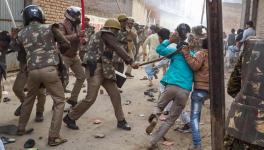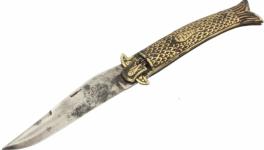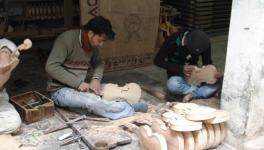The Origin of Gandhi Cap is in UP’s Rampur
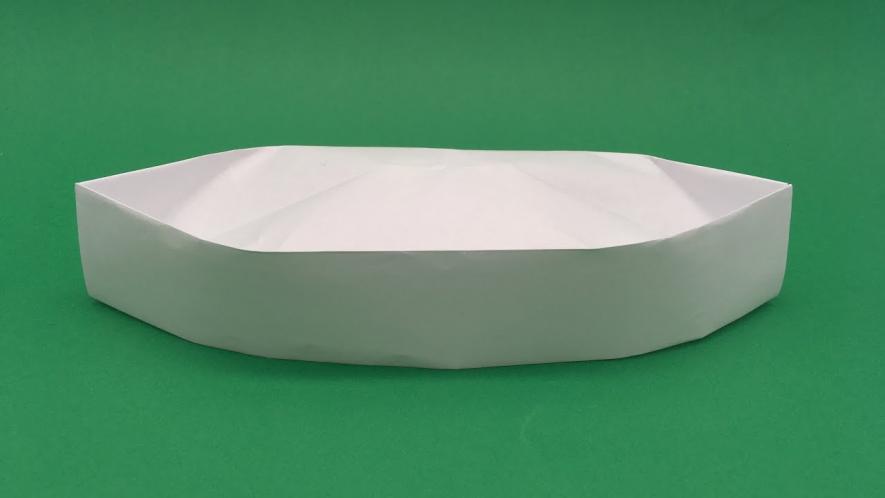
Ask those who were born at the turn of the last century or later what Rampur in Uttar Pradesh is famous for, and the answer invariably would be – knives.
Known as Rampuri knives, these foldable knives were frequently used by criminals throughout the country. These were made more famous, or infamous, by Hindi movies and songs.
But, there is more to Rampur than knives.
Over a century ago, the princely state of Rampur also became the origin of something diametrically opposite to the knife --- the white Gandhi cap.
If the knife symbolised violence, crime, bloodshed, terror and brute power, the Gandhi cap has become an emblem of non-violence, peace, love, austerity, patriotism and unity.
After India gained Independence, there came a time when fewer and fewer people stopped wearing the Gandhi cap. But it is still associated with the political class, especially in North India, and to some extent in Maharashtra. The basic design of the cap remains the same though its colour may vary from one political party to another.
It was in 1920 that Mahatma Gandhi donned a cap made from homespun fabric for the first time in Rampur. The simple cap, made from a coarse fabric, became the headgear of protest and a potent weapon for millions of Indians in their fight against the powerful British rulers. It almost became a logo of the Indian freedom movement.
The cloth that was used to make Mahatma Gandhi’s cap was not khadi. It was called gara in Hindi. Khadi came into the scene much later.
Much has also been written on this cap. One among these is Shauqat Ali, 75, who is a practicing advocate in the courts of Rampur. He has written eight books on Rampur, its history and the nawabs. His latest book is on the role of nawabs of Rampur in the freedom struggle and expected to be released soon.
According to Ali: “Mahatma Gandhi visited the princely state of Rampur in 1920 and donned the cap made from rough fabric for the first time, which gradually became popular as the Gandhi cap.”
The princely state of Rampur then comprised the present-day Rampur district and several other surrounding districts.
Nawab Sayyid Hamid Ali Khan Bahadur ruled over Rampur for 41 years, from 1889 to 1930.
Hailing from Rampur, Mohammad Ali Jauhar and his brother, Shauqat, in the first quarter of the 20th century, emerged as two towering political leaders of the country.
According to advocate Ali, in 1920, Mahatma Gandhi was in Moradabad, then a part of Rampur, to attend the wedding of Mohammad Ali Jauhar’s daughter.
As the wedding ceremonies drew to an end, Mahatma Gandhi decided to meet the nawab of Rampur.
As per Ali: “Gandhi Ji was to meet the nawab in the latter’s court. But nobody presented himself before the nawab bare headed. That was the tradition at that time in Rampur. Gandhi Ji did not have a headgear. So those accompanying him rushed to the market and rummaged through shops to find a suitable cap or hat or any headgear. But they couldn’t find the perfect size.”
Sensing that the meeting would not take place because of a missing headgear, Jauhar’s mother, Abadi Begum, decided to improvise one.
“She used gara, a coarse homespun fabric to make the cap. Gara is rougher than khadi. Khadi caught the imagination of the masses and became popular much later,” said Ali, adding that “Mahatma Gandhi liked the cap so much that he rarely removed it during his stay in the princely state.”
Jauhar and his brother, Shauqat, known as the ‘Ali brothers’, were leading the Khilafat Movement, which was at its peak that time. Gandhi ji and Congress were supporting the movement.
“The cap that Mahatma Gandhi wore at that time became popular among the masses as the Gandhi cap,” said Ali.
“Many think that the cap has its origin at either Sabarmati (Gujarat) or Wardha (Maharashtra), two places associated more with Mahatma Gandhi. But, the Gandhi cap originated in the princely state of Rampu,” said Ali.
Another little known fact, said Ali, is that like Rajghat in Delhi, Rampur also has a memorial dedicated to Mahatma Gandhi. A portion of the leader’s ashes lie buried eight feet below the ground at the memorial, he added.
It was Sir Raza Ali Khan Bahadur, the nawab of Rampur from 1930 to 1966, who brought Gandhi’s ashes to the place and got the memorial constructed at the central part of the town.
“Raza Ali Khan was close to Gandhi Ji and he rushed to Delhi when he received the news of his assassination,” said Ali.
Raza Ali Khan received a small portion of the ashes, which he collected in a silver urn and carried it back to Delhi on a special train on February 11, 1948. The distance between the two places is 200 kilometres and the nawab ensured that the train stopped at every station to enable people to see the urn and pay their last respects, according to Ali.
On the following day, some of the ashes were sprinkled on Kosi river and the rest was buried and a memorial raised over it in Rampur,
The writer is a freelance journalist based in Kanpur, Uttar Pradesh.
Get the latest reports & analysis with people's perspective on Protests, movements & deep analytical videos, discussions of the current affairs in your Telegram app. Subscribe to NewsClick's Telegram channel & get Real-Time updates on stories, as they get published on our website.











